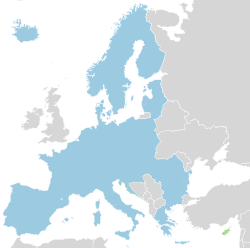Date of Admission: August 10, 2011, 2:00 AM
Location: Manila Doctors' Hospital Emergency Service Section
General Data
SM is a 23 year old male from Pasay, a second year medical student, and a Roman Catholic. Patient presents with watery and crusty blisters on the forehead and palpebral area, with intense head pain and vomiting.
Chief Complaint
Intense, continuous debilitating head pain, with grade 10/10, which developed about 4 hours prior to consult. Patient feels slight relief with cool air, but no relief with paracetamol, ibuprofen, naproxen, or diclofenac. Headache radiates from the nape region towards the left fronto-temporal area and left eyelids.
History of Present Illness
9 days prior to consult, patient started experiencing episodes of severe headache.
6 days prior to consult, patient visited local clinic for headaches and heaviness around the eyelids even after 6 hours of sleep. Patient was prescribed with naproxen and diclonefac after claiming that paracetamol and ibuprofen did not work.
5 days prior to consult, patient revisited local clinic because the medications were not effective. He was later referred to a headache specialist. After history-taking and physical examination, specialist prescribed sumatriptan.
4 days prior to consult, patient took a single oral dose of sumatriptan but it did not work.
3 days prior to consult, small maculo-papular lesions of less than 0.5 cm in diameter were observed from patient's left forehead.
2 days prior to consult, most of the lesions on the forehead have developed into watery vesicles, while the eyelids have become edematous, with which patient complains of reduced area of vision. During a practical examination in the wards, his professors noticed the lesions and identified them as herpes zoster ophthalmicus (HZO), which prompted the patient and his classmates to bring him to the hospital's ophthalmology clinic. The ophthalmology residents and consultant have positively confirmed the diagnosis, and prescribed tobramycin + dexamethasone ointment and moxifloxacin + dexamethasone eyedrops for the next 7 days. Patient also visited a private internal medicine clinic, and received prescriptions of loratidine, meloxicam, and azithromycin.
1 day prior to consult, patient was advised by his dermatologist to take acyclovir and prednisone. Later that day, patient was unable to sleep because of severe head pain, felt nausea and experienced two episodes of vomiting.
Review of Systems
(+) eye fatigability, lacrimation
(+) nausea, vomiting
(+) palpable lymph mass (left neck)
(-) fever, weakness, anorexia, weight loss/gain
(-) blurring of vision, visual aura, hearing loss, tinnitus
(-) dysphagia, nuchal rigidity
(-) cough, dyspnea, tachypnea
(-) chest pain, orthopnea, PND, palpitations
(-) abdominal pain, diarrhea, constipation, masses, jaundice, pruritus, stool change
(-) dysuria, hematuria, frothy urine, erectile dysfunction
(-) joint pain, muscle pain
(-) polyuria, polyphagia, polydipsia, nocturia, slow-healing wounds
Past Medical History
(+) Acute upper respiratory tract infections
(+) Acute typhoid fever
(-) hypertension, cancer, DM, tuberculosis, allergies
Family History
(+) Cancer - grandmother, uncle (mother's side)
(+) Cerebrovascular Disease - grandfather, uncle (mother's side)
(+) Hypertension - aunt, uncle (mother's side)
(+) Diabetes - uncle (mother's side)
(+) Dyslipidemia - aunt (mother's side)
(+) Arthritis - father
Personal Social History
(-) smoking, alcohol use, drug use
He is the eldest of 3 children, and currently lives in a boarding house in Pasay. His family is in Davao.
Previous Medications
Tobradex ointment (tobramycin + dexamethasone), 2xday, applied at the root of eyelids
Vigadexa eyedrops (moxifloxacin + dexamethasone phosphate), 1 drop 4xday
Virest (aciclovir), 800mg (2 tabs) 4xday
Pred10 (prednisone), 10mg x recommended dose, aug10-11: 4 tabs, aug12-14: 3 tabs, aug15-17: 2 tabs, aug18-20: 1 tab
Zithromax (azithromycin), 500mg 1 tab 1xday
Allor10 (loratidine), 10mg 1xday
Loxicam (meloxicam), 15mg 1xday
Physical Examination
Patient was awake, alert, and ambulatory. The patient was coherent in addressing questions, and aware of his medical situation. Patient's blood pressure is 110/70 with the patient sitting, LA, pulse rate is 72 bpm, and respiratory rate is 22 per minute. Patient is afebrile.
Upon gross HENT examination, patient has watery vesicles in the left fronto-temporal and palpebral areas as well as along the ridge of the nose. The area of the skin underlying the watery lesions is erythematous. The patient presents with ptosis due to edematous eyelids. There is a 0.5cm immovable palpable nontender lymph mass in the left carotid triangle of the neck. The left mandible area is also swollen.
Patient has a visual acuity of 50/20 O.D., and 60/20 O.S., but claims to wear eyeglasses for correcting refraction error. Upon ocular examination, the patient has pink conjunctiva and anicteric sclera. There was no dye uptake and no inflamed cells were observed. There were no signs of keratitis or uveitis.
General Working Impression
Acute herpetic neuralgia secondary to herpes zoster ophthalmicus (HZO)
Course in the Wards
At the ER section, the patient underwent ophthalmologic workup and was given ranitidine and pregabalin. Upon admission, most of the previous medications were put on hold, with tobramycin, moxifloxacin, and acyclovir maintained.
8/10/11: Patient seen by Ophthalmology, given gancyclovir eye gel 1drop 5xday. Patient seen by Infectious Disease, acyclovir dosing rate was stepped up to 5xday, 800mg/dose. Patient underwent CBC and blood chemistry workup. Results showed normal Ht, Hgb, RBC, platelet and creatinine levels. However, CBC showed slightly reduced WBC count and slightly elevated neutrophil count. Patient complained once of severe headache, gabapentin was given as needed.
8/11/11: Patient does not complain of headache anymore. Patient's eyelids were less edematous and of improving quality. Patient was discharged by Ophthalmology and Infectious Disease, for follow-up.
Current Medications
Tobradex ointment (tobramycin + dexamethasone), 2xday, applied at the root of eyelids
Vigadexa eyedrops (moxifloxacin + dexamethasone phosphate), 1 drop 4xday
Virgan eye gel (gancyclovir), 1 drop 5xday
Virest/Zovirax (aciclovir), 800mg (2 tabs) 4xday
Pred10 (prednisone), 10mg x recommended dose, aug12-14: 3 tabs, aug15-17: 2 tabs, aug18-20: 1 tab
Neuropontin (gabapentin), 500mg as needed
Review of Literature
- Stankus, S.J., Dlugopolski, M., & Packer, D. 2000. Management of Herpes Zoster (Shingles) and Postherpetic Neuralgia. American Family Physician, 61: 2437-44, 2447-8.
- Johnson, R.W., & Dworkin, R.H.. 2003. Treatment of herpes zoster and postherpetic neuralgia. BMJ, 326:748, doi:10.1136/bmj.326.7392.748.






















